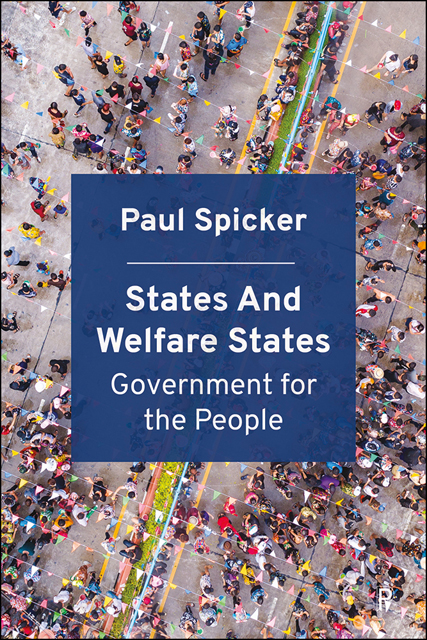1 - Introduction: the state, and what it has become
Published online by Cambridge University Press: 20 June 2023
Summary
Summary
The state is often represented – or misrepresented – as if its role was defined by the use of physical force. For most of us, however, the state refers as much to a set of administrative processes, and to the services that its institutions provide, as it does to any of the other activities associated with government. The state routinely interacts with people in their daily lives. It manages the social infrastructure. It delivers benefits and services, typically including health care, education and cash benefits. Some states do this more effectively and more comprehensively than others, but even those which fall short in some respects can at least say that it is part of what they do, and what they are meant to do.
States and welfare states is a work of normative political theory, applied to social policy. It discusses the role and responsibilities of contemporary governments. The central questions of political theory have mainly been understood to be either the question of political obligation – the responsibility that people have towards their government – or the question of who benefits, which focuses attention on the ways that government can be used to serve particular interests. This book addresses a different set of questions. What responsibilities do governments have towards their populations? What ought they to do, and what not? How can they do things better?
Government is both a set of institutions and a process. As a set of institutions, the government consists of the agencies and the officials who make and set policy: it is the government of a country that leads in developing the legislative framework and administers the policy-making process. As a process, government refers to the political direction of these institutions. The ‘state’ might refer either to those institutions which are part of the apparatus of government – primarily its legislative and executive functions – or to the country that is being governed; but ‘the state’ is also a shorthand for referring to the system as a whole, and that is how the term will be used in this book. The other term most used here, ‘welfare state’, is evocative, but richly ambiguous. It can be taken variously to refer to the provision of services by the state, to societies where welfare is provided, and to an ideal model where welfare is provided more extensively.
- Type
- Chapter
- Information
- States and Welfare StatesGovernment for the People, pp. 1 - 14Publisher: Bristol University PressPrint publication year: 2022



